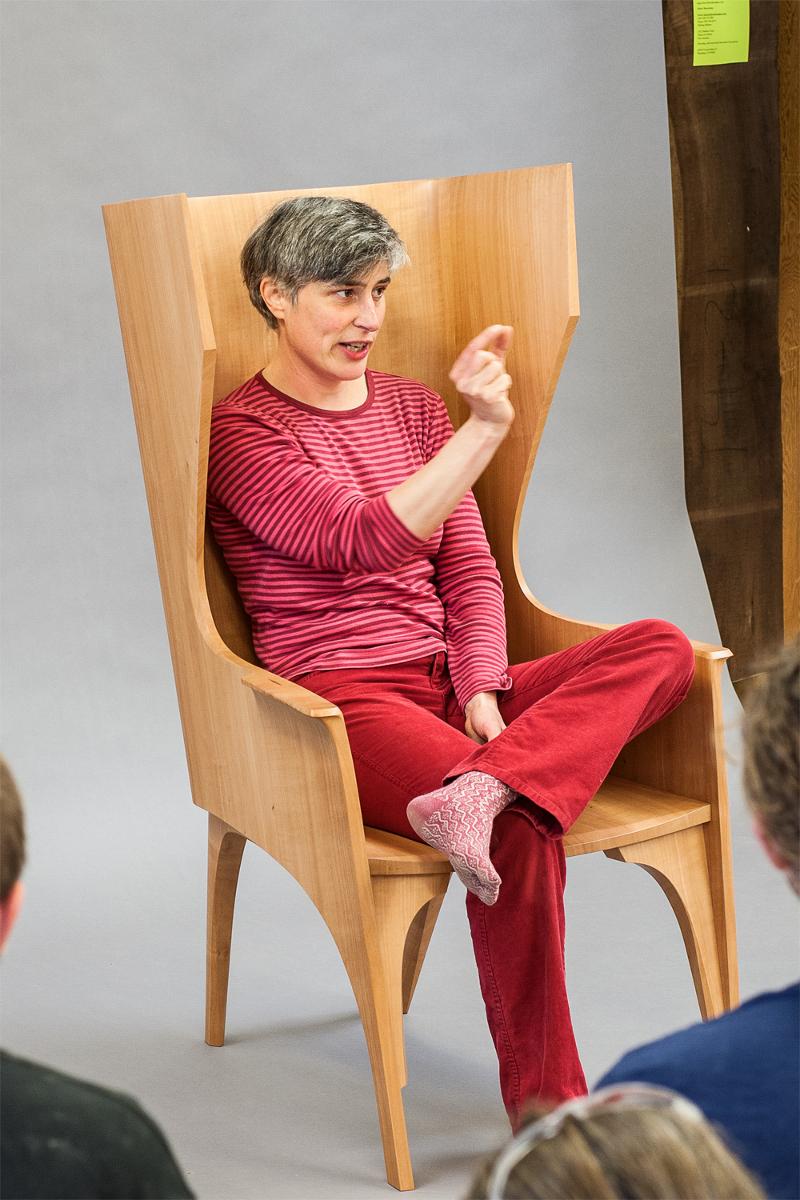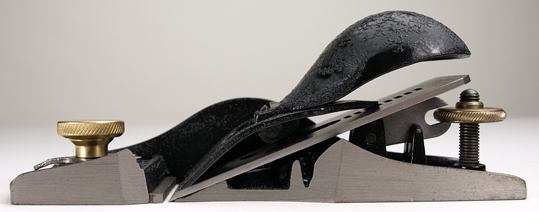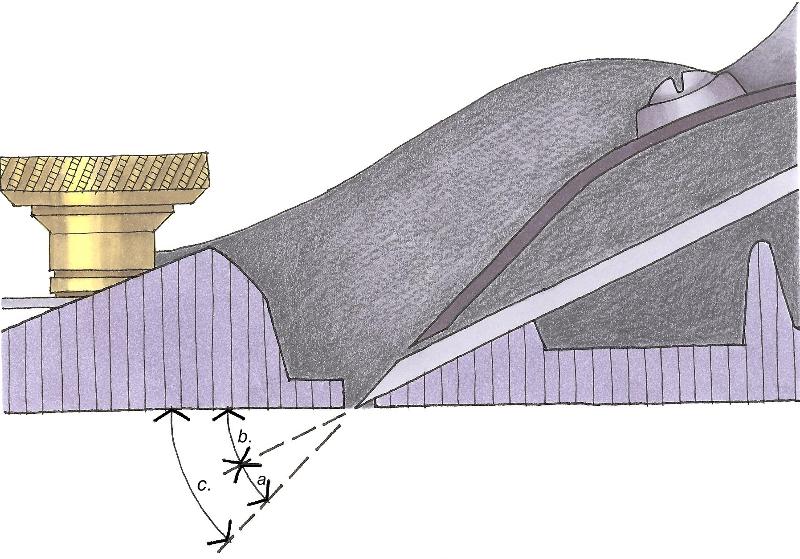HOCK TOOLS'
PHOTO ALBUM:
Cool Plane Making,
Cool Plane Makers
| |
|
Join the
Proud & Unplugged
|
No plug, no noise.
A single woodworker
a well-tuned handtool, and the rhythm of work on a nice piece of wood.
The best surface is produced by
a hand plane.
No amount of sanding
can get you there.
You can see it.
You can feel it.
And, there is nothing like that feel of satin
under your fingertip.
Join the
Proud & Unplugged
Quality Guaranteed Since 1982
|
|
Greetings!
 |
Ron in the
Hock Tools' Shop |
Thanks for helping us stay out of trouble this summer; we've been just too busy, thanks to customers like you. Some customers know that Linda and I have been remodeling our kitchen. Thanks for the good advice; we've taken just about none, which I've found out is pretty normal behavior. It's been a distracting project to say the least, but what an odyssey! Isaac Fisher, the woodworker who makes our kits and designed our popular scratch stock, is our cabinetmaker. He brought us a design, and then another design, and then we asked for a couple more because, well you know, why not? Then he transformed our kitchen into a wonderful place we hardly recognize. But, guess what? This new kitchen - not finished quite yet - told us something. We grew up. We have a grown up's kitchen, so it must be true. Now, if I can only get Linda to stop shopping for more kitchen stuff... Linda's interview with Laura Mays is great reading. Laura is more amazing than I knew and this interview proves it. We've introduced the interview here and continued it on The Sharpening Blog. So, if you find yourself on the blog, please come back to this issue of Sharp & to the Point to continue. And thanks for the photographs. Let's keep those coming! Also, please let me know if I can help you with anything from Hock Tools. Sincerely,

Ron Hock
Hock Tools(888) 282-5233
(707) 964-2782
|
|
+ E V O L U T I O N A R Y,
- R E V O L U T I O N A R Y:
An Interview with Laura Mays
Studio furniture maker Laura Mays hails from Ireland, has a background in architecture and design, and is a highly accomplished maker of wood furniture. She studied at the Glasgow School of Art, holds a Bachelor of Architecture from University College Dublin, a National Certificate in Furniture Design and Manufacture, and a Master of Arts in Furniture Design. So, we can tell this woodworker is serious, not to mention accomplished!
 | Laura Mays at Furniture Society Conference, June 2012
Photo Credit: David Welter
|
Laura spent this past academic year as the new lead instructor of the Fine Furniture Program at College of the Redwoods in Fort Bragg, California.
CR's Fine Furniture Program is best known for its founder, master cabinetmaker James Krenov (A Cabinetmaker's Notebook, etc.). Students came from and are spread all over the world, as is still the case since Krenov's retirement in 2002. Laura was also a CR student for two years, under Krenov in 2001 and under Michael Burns in 2003, receiving two more intensely focused years of training in fine woodworking.
In the following e-interview, Laura Mays shares insights about the craft of and instruction in making furniture out of wood. And, just for a heads up, we've made the interview into two blog entries so that we did not lose one iota of the story. All will be revealed when you...
|
|
A D V A N C I N G H A N D T O O L S:
A Bit about Block Plane Blades from
The Perfect Edge by Ron Hock
Since Laura Mays speaks in our interview above about her Lie-Nielson small block plane, you might like to read this excerpt from Chapter 6 on Plane Irons in The Perfect Edge; the Ultimate Guide to Sharpening for Woodworkers, Ron's well-received tome on sharpening published by Popular Woodworking Books. The following comes from page 103 of Chapter 6, "Plane Irons."
 |
Typical block-plane geometry: a. Bed angle = 20º;
b. Bevel angle = 25º; c. Angle of attack = 45º.
|
 | |
Drawing by Martha Garstang Hill
|
Angle a. is the bevel angel of the blade, angle b. is the bed angle of the plane = 20º,
angle c. is the angle of attack, the combination of a + b.
"Block plane blades are used bevel-up without a cap iron. Remember that the angle of attack with a block plane is the sum of the bed angle added to the bevel angle. A standard block plane has a bed angle of 20º so if you ad that to your bevel angle of 25º you end up cutting at the same able as a bench plane, 45º . To reduce the angle of attack, perhaps for cutting end grain, a smaller bevel angle, and hence a lower cutting angle, may be desirable. A back bevel here can increase the strength of the edge by increasing the overall bevel angel, but be careful not to add too much back bevel or you can interfere with the clearance angle of the blade. You can reduce the angle of attack to 37º with a bevel angle of 17º and, by adding an 8º back bevel, retain the strength of an included bevel angle of 25º .
Low angle block planes, with a bed angle of 12º should not have any back bevel added to their blades. The 12º bed angle is about the minimum for clearance behind the edge and any back bevel would reduce that, eliminating the necessary relief."

The Perfect Edge; the Ultimate Guide to Sharpening for Woodworkers by Ron Hock, Popular Woodworking Books.
|
|